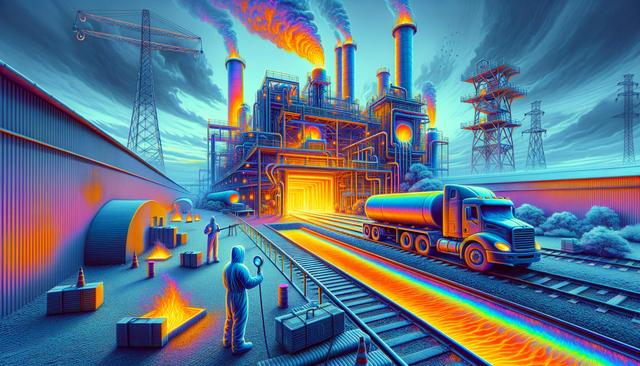Understanding Industrial Thermography Services
Industrial Thermography Services: Detect Issues Before They Escalate is a preventative maintenance tool that uses infrared imaging to identify thermal anomalies in machinery, electrical systems, and structural components. These anomalies often indicate underlying issues such as overheating, loose connections, friction, or insulation breakdowns. By capturing temperature variations invisible to the naked eye, thermography provides a non-invasive and highly effective diagnostic method for industrial environments.
This approach is especially valuable in sectors where equipment uptime is critical. Manufacturing plants, energy facilities, and processing industries often rely on thermographic inspections to maintain operational continuity. Since inspections can be performed without shutting down equipment, businesses can avoid costly production halts. Moreover, regular thermographic surveys help establish baseline readings, making it easier to detect deviations that signal emerging problems.
Applications Across Industrial Settings
Industrial Thermography Services: Detect Issues Before They Escalate plays a vital role in a wide range of applications. It is not limited to mechanical systems but extends to electrical panels, HVAC systems, and even building envelopes. Each application helps uncover specific types of failures that could otherwise go unnoticed until they cause serious damage. Common areas of inspection include:
- Electrical systems: locating overloaded circuits, unbalanced loads, or deteriorating connections
- Rotating machinery: identifying bearing wear, misalignment, or poor lubrication
- Insulation performance: detecting energy loss through walls, roofs, or windows
- Steam systems: spotting faulty valves or condensate build-up
Each of these use cases contributes to a broader strategy of predictive maintenance. When issues are detected early, they can be addressed during planned maintenance windows, reducing emergency repairs and extending the lifespan of equipment.
Benefits of Early Detection Through Thermography
The primary advantage of Industrial Thermography Services: Detect Issues Before They Escalate is its ability to uncover problems before they cause system failure. This early detection capability translates into multiple operational benefits. Firstly, it improves safety by identifying potential fire hazards or equipment failures that could endanger personnel. Secondly, it contributes to energy efficiency by revealing areas of energy loss or inefficiency within systems.
Additional benefits include:
- Reduction in unplanned downtime
- Lower maintenance costs through proactive repair
- Improved asset reliability and performance
- Enhanced documentation for compliance and audits
These advantages make thermography a strategic investment for companies looking to improve their maintenance practices and ensure uninterrupted operations.
Integration with Maintenance Programs
Integrating Industrial Thermography Services: Detect Issues Before They Escalate into an existing maintenance program can significantly boost its effectiveness. Thermographic inspections complement other condition-monitoring techniques such as vibration analysis and oil sampling. When used together, these methods provide a comprehensive view of equipment health, allowing maintenance teams to make informed decisions.
To successfully incorporate thermography services, companies should:
- Schedule regular inspections based on equipment criticality
- Train staff to understand thermographic reports
- Use findings to prioritize maintenance tasks
- Maintain a historical database of thermal images for trend analysis
By aligning thermographic data with other performance metrics, businesses can create a robust predictive maintenance framework that minimizes risk and maximizes uptime.
Choosing Qualified Thermography Providers
To gain the full value of Industrial Thermography Services: Detect Issues Before They Escalate, it is essential to work with qualified professionals. Certified thermographers not only operate infrared cameras but also interpret thermal patterns accurately. Their expertise ensures that anomalies are correctly identified and contextualized within the broader operational framework.
When selecting a thermography service provider, consider the following criteria:
- Certification from recognized bodies (such as Level I, II, or III thermography)
- Experience in your specific industry or application
- Use of high-resolution infrared equipment
- Detailed reporting with actionable insights
An experienced provider will also offer guidance on follow-up steps and assist in developing a long-term inspection schedule. This partnership approach helps organizations stay proactive and continuously improve their maintenance strategies.
Conclusion: A Strategic Approach to Reliability
Industrial Thermography Services: Detect Issues Before They Escalate provides a valuable layer of insight for industries aiming to enhance equipment reliability and operational efficiency. By identifying potential issues early, companies can take corrective action before minor defects escalate into costly failures. The integration of thermography into maintenance programs not only reduces downtime but also supports a culture of safety and continuous improvement. For industries where every minute of uptime counts, investing in thermographic inspections is a practical and forward-thinking decision.




Leave a Reply